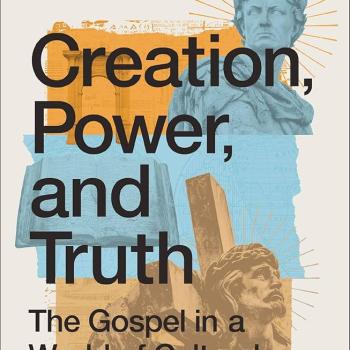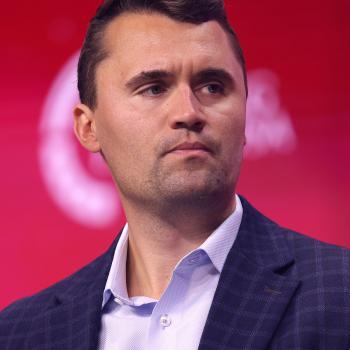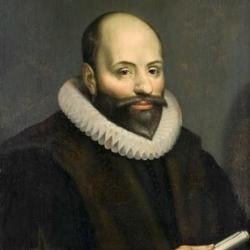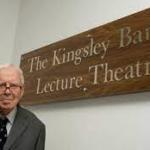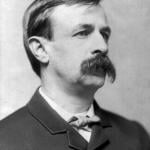Christianity and Science: How They Relate to Each Other in Modern Theology
The unifying theme of my newly published book The Journey of Modern Theology: From Reconstruction to Deconstruction (IVP) is Christian theological responses and reactions to modernity. Modernity is, of course, that cultural ethos stemming from the Enlightenment and the scientific revolutions of the seventeenth and eighteenth centuries especially. (One could extend the era of modernity’s cultural dominance in the West into the twentieth century.) Toward the end of the book, beginning with the chapter on liberation theologies, I discuss postmodernity, but, of course, postmodernity, whatever else it may be, is a response and reaction to modernity.
My study of modern theology, from the deists (Toland, Tindale, et al.) to deconstructionists (my case study is John Caputo), led me to believe that much of it is driven by desire to extricate Christianity from conflicts with “the sciences” (broadly defined, not just the so-called “physical science”). The book begins with the “Galileo affair” which, I believe, still haunts thinking Christians. Both the majorities of Protestants and Catholics rejected Galileo’s discoveries in astronomy (as they had ridiculed and rejected Copernicus’s before him). And yet, in the end, he proved his heliocentric universe idea to be true so convincingly that everyone had to agree. The Catholic Church leaders of his time knew he was right, but wanted to suppress his discovery. His persecution by the church was for not obeying its order not to publish his proof.
Other scientists discovered facts and promulgated theories that conflicted with traditional Christian reliance on Aristotle and a non-scientific cosmology based on misinterpretation of the Bible. For at least two centuries it seemed that in every conflict between “science and Scripture” or “science and theology” Scripture and theology lost to science. This added up to a humiliation for orthodox theology (as it was understood then) and the established churches. Two extreme reactions set in among Christians. One was to reject everything science says. “Science” became the sphere of evil and deception. The other, opposite, extreme was to accept whatever seemed to be the prevailing scientific mood and theory at any given time and totally capitulate to it, trimming Christianity down to an “essence” that could not conflict with science.
But many Christians worked in the middle ground between those extremes. Galileo himself carved out a compromise approach in his “Letter to the Grand Duchess Christina” (of Tuscany). According to him, theology reigns in matters of salvation whereas science reigns in matters of physical reality. The approach was something like “Christianity is not about how the heavens go but how to go to heaven.” That’s oversimplifying, of course, but it pretty well describes his general method of handling conflicts between traditional Christianity and science. To be more precise, Galileo denied any errors in Scripture but said that whenever science proves something that seems to conflict with Scripture, theology must reinterpret Scripture. Twentieth century evangelical theologian Bernard Ramm took this approach in his classic The Christian View of Science and Scripture (1954). Between Galileo and Ramm, Charles Hodge advocated much the same approach in his Systematic Theology (1872/1873). Of course, neither Hodge nor Ramm advocated adjusting theology to every theory of scientists. Ramm stated that traditional biblical interpretation should accommodate only to the “material facts” of science—what has been proven beyond serious doubt.
It seems to me (and I have described this in Journey) many modern Christian theologians have adopted a different approach than Galileo’s, Hodge’s or Ramm’s. Much modern theology seems to be intent on rescuing Christianity from conflicts with science, where theology usually loses, by redefining “Christianity” such that it cannot conflict with science. Wolfhart Pannenberg fought against this “ghettoizing” of theology and spent much of his later career attempting to establish dialogue between science and theology with an eye toward re-integration of the two. His goal was mutual transformation of science and theology, not capitulation of theology to science or antagonism between them.
However, from Friedrich Schleiermacher on, the general “drift” of modern theology was to separate Christianity from science so that conflict is impossible. If Schleiermacher is right, if Albrecht Ritschl is right, if Rudolf Bultmann is right, if Paul Tillich is right (and one could name many more), Christianity’s “true essence” has nothing to do with what science studies, so conflict between them is impossible. Christianity’s true essence came to be seen as either “God-consciousness” (Schleiermacher) or ethics (Ritschl) or “authentic existence” (Bultmann) or “ultimate concern with Being Itself” (Tillich). Many other modern theologians, in their own ways, attempted to reinterpret Christianity so that it could not be undermined by science.
But, according to Pannenberg and others, all this came at great cost. For one thing, it helped fuel the “Atheismusstreit” (the atheism struggle”) in the European universities. Especially, but not only, atheists wanted theology expelled from the universities as it was considered not a science at all. (It is usually taught as one of the human sciences.) It also, Pannenberg argued, reduced theology’s voice to irrelevance in the “public square,” the market place of ideas, making it esoteric.
One serious problem with these many theological attempts to rescue Christianity from “the acids of modernity” (Walter Lippman’s phrase) and especially science by subjectivizing it (using Romanticism or existentialism, etc.) was that science kept expanding its territory to include the human subject and his or her consciousness. Schleiermacher did not foresee Freud. Tillich struggled with depth psychology, attempting to integrate it with theology and vice versa, without much success. Sociobiology appeared on the scene to argue that religion itself is an adaptive behavior. In other words, redefining Christianity to avoid conflicts with science while retaining any reliance on “God of the gaps” thinking does not seem to work. Science seems intent on closing all the gaps—even subjective consciousness and self-understanding.
This is the pathos of modern theology—how to avoid repetitions of the Galileo affair.
One wrong approach is to trim “Christianity” to fit whatever “science” seems to be saying. This is the accommodationist approach. It appears in all versions of “naturalistic theisms” including process theologies. As one pundit put it, theology was so afraid of being kicked into the ditch by modernity that it jumped there to avoid the pain of being kicked.”
Another wrong approach is to resist science to the point of rejecting even its material facts. Most conservative Christians have long accepted the truth of the heliocentric system and that the earth is round so that heaven is not “up.” (Although I once heard a Christian evangelist argue that heaven is truly “up”—from the north pole because all maps show that as “up” from anywhere on the planet.) But many Christians seem simply to want to stick their heads in the sand and ignore science (if not demonize it)—except for its technological creations (e.g., cancer treatments).
A very common wrong approach, however, is to redefine “Christianity” so that its “essence” cannot be undermined or supported by science. Theology and science exist in water tight, separate compartments. This results in theology’s irrelevance to public truth and its reduction to an esoteric “science.”
Finally, some Christians wrongly take the “two truths” approach. For them, scientific facts can contradict Christian beliefs but somehow both are to be embraced.
Probably no single issue has caused as much consternation and confusion and loss of credibility for theology as its various approaches to science.
For now, anyway, I hold to the common sense approach of Hodge and Ramm. It’s not that Christianity is only about “how to go to heaven” and not at all about “how the heavens go.” Christian theology needs to have a cosmology informed by the best science. However, theology need not adapt to every passing theory of scientists. But when something is established as material fact beyond a reasonable doubt theology must accept it and adjust to it. An example, more recent than Galileo, is the age of the earth. Only people who refuse to face material facts still think Bishop Ussher’s dating of the creation is even close to correct.
Recently even some orthodox Christians, evangelicals among them, have sought a “non-interventionist” view of God’s providence. I would dare to say that this is quickly becoming a major trend among even moderate theologians. (To be sure, not all are seeking this, but more are than make me comfortable.) The whole concept of “miracle” is becoming problematic, even among theologians who adamantly deny being “liberal.” They do not deny “acts of God,” they simply do not think they include anything like “interventions” in nature or history which are ruled by laws. God acts, they say, through natural laws which are under his control.
The question this raises, of course, is the resurrection of Jesus. How does one express the bodily resurrection (which many of these non-interventionist theologians affirm) in non-interventionist terms?
One of my questions for non-interventionist theologians (and here I’m talking only about those who still believe God acts in nature and history outside the individual’s consciousness) is how did God bring about the resurrection of Jesus Christ “non-interventionally?” What model of “act of God” can be called non-interventionist while still affirming the bodily resurrection of Jesus.
Now, if someone says, well, Jesus didn’t rise from the dead bodily, my response is “Here I’m not talking to you or about you.” What I’m seeking to know is how an orthodox Christian, one who believes in God’s providential activity in the world, including (even if only) the bodily resurrection of Jesus, can explain the miracle of the resurrection non-interventionally.
For now, anyway, I still do not see any conflict between believing God sometimes intervenes in nature and history with genuine miracles and belief that normally nature is uniform. Scientists studying nature should practice methodological atheism, but I don’t see how believing in the normal uniformity of nature (everything we normally observe has a natural cause) excludes miracles if God is conceived as omnipotent—”big enough” to “fix” whatever problems an intervention might normally cause in the universe.




